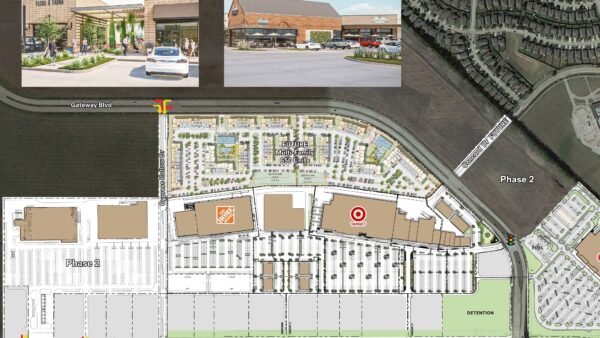
Despite economic uncertainties and shifts in market fundamentals, the Dallas-Fort Worth industrial sector continues to demonstrate growth and resilience, offering diverse prospects for those seeking to capitalize on its long-term growth trajectory and strategic advantages.
This analysis explores the current state of the DFW industrial market, examining key performance indicators, investment trends and outlook to provide a comprehensive understanding of why DFW remains a compelling investment proposition for those looking to capitalize on the region’s momentum.
A dynamic economic backbone
The Dallas-Fort Worth metroplex, with a population of over 8.2 million, consistently ranks among the nation’s top leaders in both population and employment growth, attracting individuals and businesses due to its expanding and diversified corporate base, high quality of life and low cost of living. With a 28 percent population growth from 2010 to 2024, outpacing the U.S. average by growth of 9 percent, and an additional 615,000 new residents projected by 2029, DFW has been and will continue to be a leader of population growth across the U.S.
READ ALSO: Why Today’s Retail Developers Need Equity Investors
DFW’s appeal is further enhanced by its strategic, central location along key logistics corridors serving as a connector to major industrial markets across the country, from Inland Empire on the West Coast to Atlanta on the East Coast. Not only does DFW benefit from direct access to the Texas Triangle where tenants can reach over 25 million people within five hours, but DFW also has access 37 percent of the country within 24 hours and 93 percent within 48 hours.
These factors collectively explain why the “Big D” is a national economic powerhouse, continuing to attract both tenants and investors seeking to capitalize on its robust market fundamentals.
Industrial market resilience
The DFW industrial market entered 2024 grappling with challenges from the aftermath of heightened supply deliveries. However, the market has shown signs of a quick correction with construction activity falling to 17.1 million square feet in Q3 2024, which is the lowest level since Q2 2015, with expectations for further slowdown in the speculative development pipeline.
Currently, DFW ranks second nationally in annual absorption, with 15.1 million square feet, surpassed only by Houston at 16.6 million square feet. Notably, DFW also accounts for 14 percent of the country’s absorption while representing just 6% of the national inventory, highlighting the scale of the Metroplex’s industrial sector. Even more impressively, Texas represents 33 percent of the country’s absorption, underscoring the state’s dominance when it comes to industrial demand.
Despite a deceleration in new leasing activity as compared to 2021-2023, which averaged 12.3 million square feet leased per quarter, the market is currently averaging 10.4 million square feet of new leasing activity per quarter in 2024, which is still a 6 percent increase from the 2018-2020 period. DFW continues to see new tenants in the market and will continue to see increased demand as it is a low-cost option for tenants looking to be located in a major U.S. market. With an average asking rate of $7.50 per square foot, currently ranking 10th among major U.S. markets, DFW provides tenants rental rates 58 percent below the number one ranking Los Angeles. Additionally, DFW does not only attract small local and regional users looking for shallow to mid bay product, but the market also attracts national companies looking to locate in big box buildings, which continues to put downward pressure on vacancy rates.
The combination of strong absorption and slowed development indicates a market transitioning towards a more balanced state over the coming quarters, which should put DFW in a prime position to benefit from strengthened fundamentals.
Investment landscape and opportunities
Capital markets in the region is also seeing renewed interest, with increased sale transaction volume across industrial product and increased investor demand for opportunities in DFW and the larger Texas market. With $3.4 billion in industrial transactions volume across DFW in the first three quarters of 2024, a 27 percent increase from the same period in 2023, this uptick signals renewed confidence among investors not only in industrial real estate, but more importantly the DFW market.
Investors are focused on credit-worthy tenancy, longer lease terms and quality, functional real estate. Due to this, we have seen increased investor interest in core sale opportunities across DFW that owners have been able to capitalize on. The industrial sector now accounts for 39 percent of U.S. core investors’ (ODCE fund) exposure across property sectors, which marks an 18-percentage point increase from the end of 2019.
DFW has been an active market for bulk leasing for spaces over 400,000 square feet, with 17 new leases signed this year totaling over 11 million square feet, not including in-place renewals. While pricing stabilized, bulk assets has been complex, there has been sufficient investor demand due to the opportunity to buy at a low basis, below replacement cost typically and the ability to be at or around neutral leverage day one of their investment. Additionally, some investors are capitalizing on the reduced competition in this space, as not all investors are active on these opportunities.
Furthermore, land pricing in DFW, especially for infill sites, continues to be at elevated levels, reflecting the scarcity of best-in-class development opportunities in premier locations across DFW. This trend, coupled with the deceleration in new construction, suggests a potential supply constraint that could further benefit developers deciding to break ground today.
Strategic positioning and future outlook
Looking ahead, DFW’s strategic economic positioning, robust market fundamentals and dynamic investment opportunities cement its status as a formidable force in the industrial real estate sector. The ongoing influx of capital, despite short-term challenges, underscores investor confidence in the region’s long-term economic prospects. As the commercial real estate landscape evolves, the question for investors becomes: How will you leverage DFW’s unique advantages to stay ahead in this dynamic and opportunity-rich industrial powerhouse?





